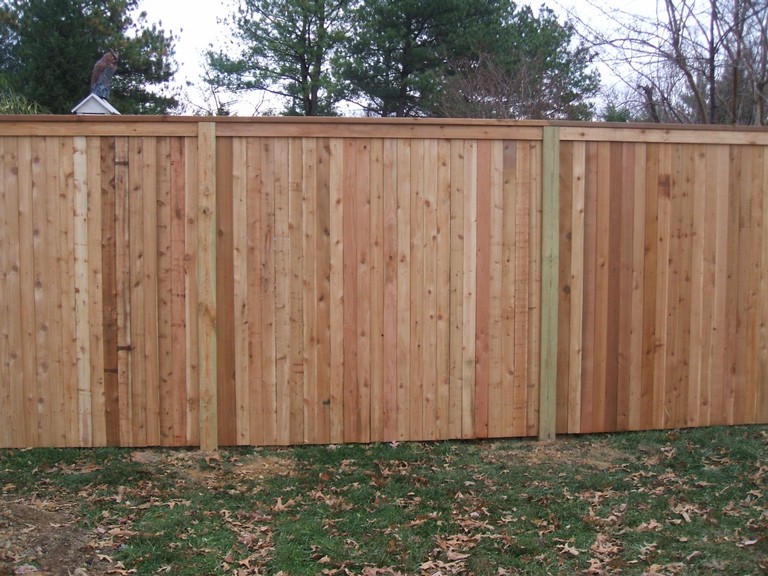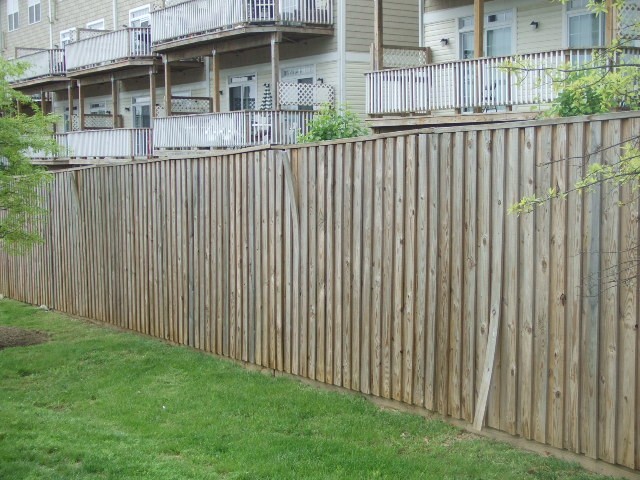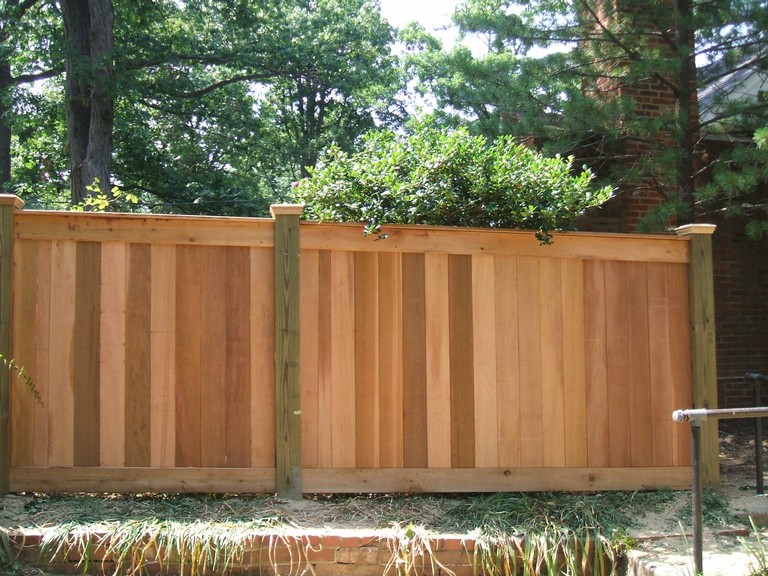Cedar Vs Pressure Treated Pine Fence
SHORT VERSION:
FOR THE LONGEST LASTING, BEST LOOKING FENCE, WE RECOMMEND USING PRESSURE TREATED PINE FOR THE POSTS, AND CEDAR FOR THE REST OF THE FENCE! If someone tells you that pressure treated pine is better than cedar for the above-ground portion of the fence, it is probably because they do not stock cedar. Ask them if they will guarantee and replace any warped pressure treated pine components of the fence!
LONG VERSION:
Western Red Cedar: This species of lumber is best for any type of board or picket fence – as long as the bottom of the fence is not continually touching the ground. Cedar is a very stable wood. It does not warp, shrink, or check, (split), as pressure treated pine will likely do eventually. Pressure treated (PT) pine boards can warp and shrink as quickly as one month after installation. At 10 years, a fence using cedar boards will have a much nicer appearance, compared to a pressure treated pine board fence.
Our cedar usually comes from British Columbia, Washington state, and Oregon state. It can be anywhere from 50 to 80 years old. Cedar lumber costs more than the fast-growing Southern yellow pine, but it is well worth the extra expense. Cedar could last 30 years or more and will not warp!
Pressure Treated Pine: This type of lumber usually originates from the Southeastern United States, and can be a Southern yellow pine species or a mixed pine species. It is a fast growing tree, being one of the few types that can be pressure treated. Other types of wood have a different cell structure and will not accept the treatment process.
This pine, after it has been cut to size, is first kiln dried to remove most of the moisture. Then it is bundled up and put into huge cylindrical tanks. Next, a water based solution of micronized copper azole is forced into the wood fibers using pressure. This process makes the wood very heavy and gives it a dark green appearance.
This pressure treated pine is guaranteed by the manufacturer not to decay or have insect damage for 20 years or more. It is not guaranteed against shrinkage, warping, or checking (splitting). We do not guarantee that this will not happen, because it often does. When PT pine starts drying out, it can develop “checks” which look like splits or cracks in the posts or boards. This is a common complaint from new owners of wood fencing. Actually, the wood is shrinking slightly, a natural seasoning (drying out) of any piece of lumber.
When a fence post dries, the outer surface (sapwood) shrinks faster than the inner heart of the piece, and something has to give. For this reason, posts have a natural tendency to develop a V-shaped check towards the center. The result is the familiar “check” which is technically neither a split nor a crack. Depending on the weather and the season your wood fence is installed, checking may occur right away, or it might wait for warmer weather. We usually use only PT pine for the posts because they will not decay in the ground as quickly as a cedar post would. Otherwise, we would use a cedar post.
PLEASE NOTE: Most board fences you may see are built with all PT pine, because cedar is not available at most home centers and lumber yards, and is more expensive. We usually stock the finest cedar boards available and order in bulk. Often, we have “CLEAR” Western Red Cedar boards that have no knots. This is the highest grade of cedar available. When we build a fence with these clear boards, it is an impressive sight!



